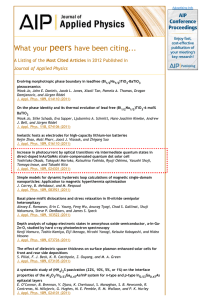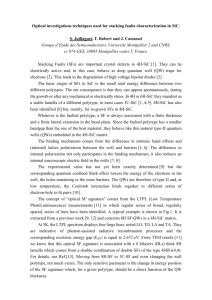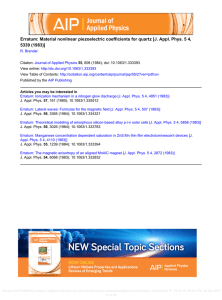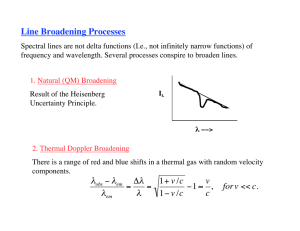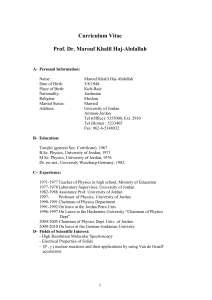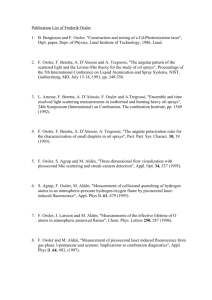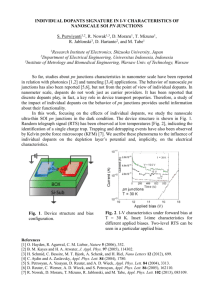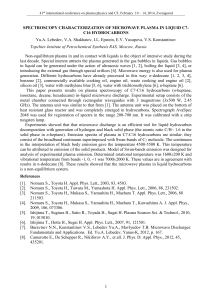Line broadening driven by elastic anisotropy in high
advertisement
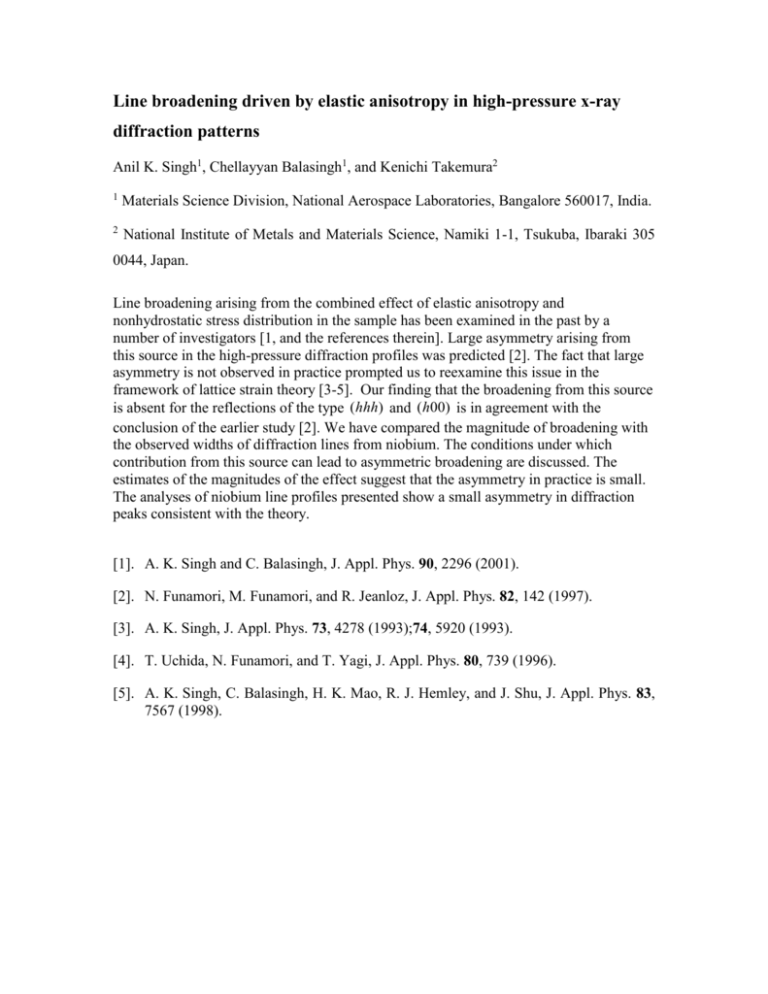
Line broadening driven by elastic anisotropy in high-pressure x-ray diffraction patterns Anil K. Singh1, Chellayyan Balasingh1, and Kenichi Takemura2 1 Materials Science Division, National Aerospace Laboratories, Bangalore 560017, India. 2 National Institute of Metals and Materials Science, Namiki 1-1, Tsukuba, Ibaraki 305 0044, Japan. Line broadening arising from the combined effect of elastic anisotropy and nonhydrostatic stress distribution in the sample has been examined in the past by a number of investigators [1, and the references therein]. Large asymmetry arising from this source in the high-pressure diffraction profiles was predicted [2]. The fact that large asymmetry is not observed in practice prompted us to reexamine this issue in the framework of lattice strain theory [3-5]. Our finding that the broadening from this source is absent for the reflections of the type (hhh) and (h00) is in agreement with the conclusion of the earlier study [2]. We have compared the magnitude of broadening with the observed widths of diffraction lines from niobium. The conditions under which contribution from this source can lead to asymmetric broadening are discussed. The estimates of the magnitudes of the effect suggest that the asymmetry in practice is small. The analyses of niobium line profiles presented show a small asymmetry in diffraction peaks consistent with the theory. [1]. A. K. Singh and C. Balasingh, J. Appl. Phys. 90, 2296 (2001). [2]. N. Funamori, M. Funamori, and R. Jeanloz, J. Appl. Phys. 82, 142 (1997). [3]. A. K. Singh, J. Appl. Phys. 73, 4278 (1993);74, 5920 (1993). [4]. T. Uchida, N. Funamori, and T. Yagi, J. Appl. Phys. 80, 739 (1996). [5]. A. K. Singh, C. Balasingh, H. K. Mao, R. J. Hemley, and J. Shu, J. Appl. Phys. 83, 7567 (1998).


